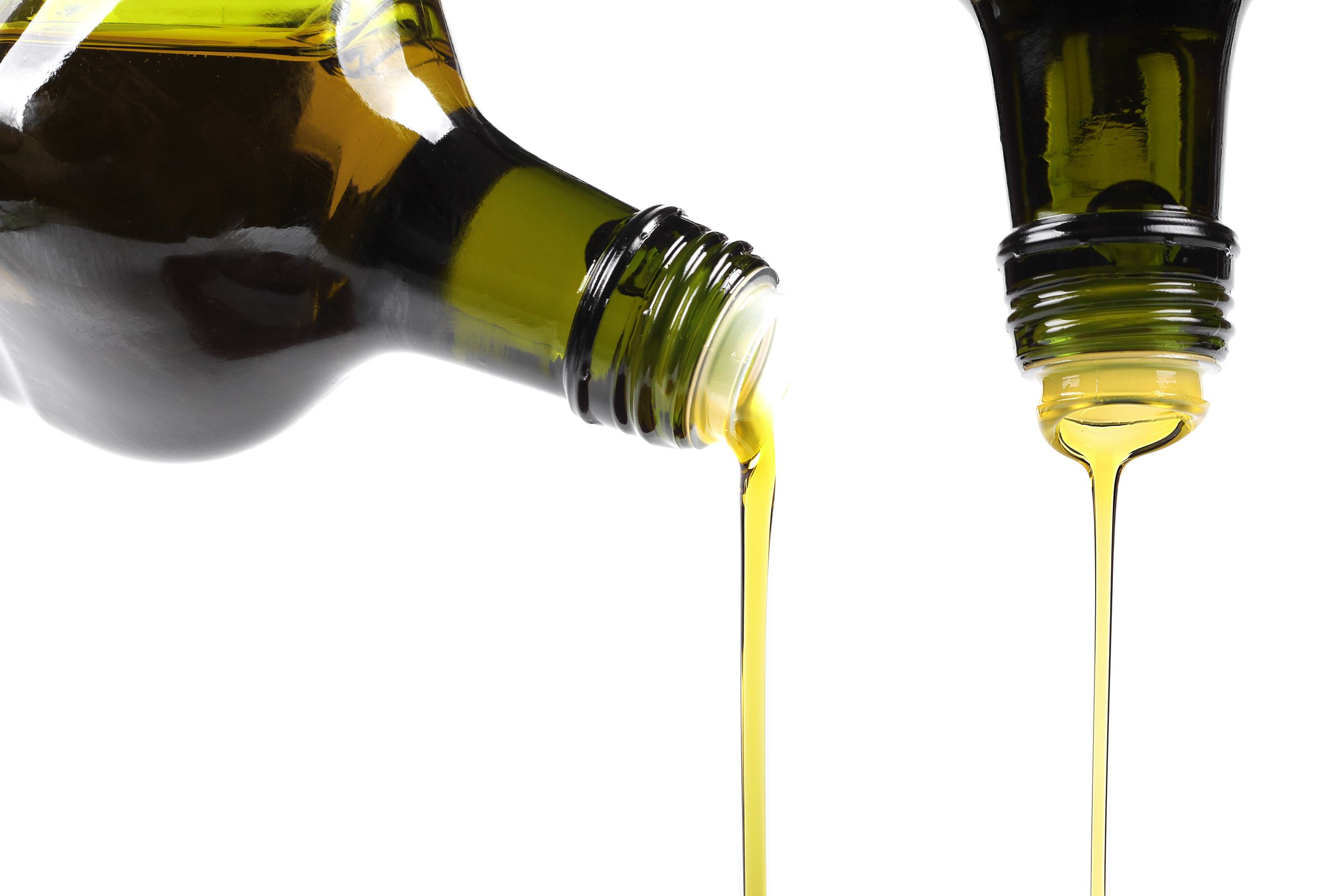
Blending
Over 1,000 varieties of olives grow throughout the world and each type imparts its unique flavor to the oil created from it. Although some producers choose to bottle single varietal olive oils – oils made from just one type of olive – most oils are made from a blend of different olive varietals. We asked Nancy Ash, a foremost expert in this field, to write her thoughts about this subject. She has blended many award-winning and best-selling oils over the years. Here is what she has to say.
For some olive growers, generally with small acreage, the blend is created in the orchard. Different varietals may be planted together, or harvest yields may be small, causing that producer to harvest and mill all olive fruit together. These field blends are bottled as is without further handling.
For larger producers it is common to either mill varietals separately, or mill blends of olives at different stages of ripeness. Each batch of oil is then stored separately, leaving the producer with several different oils, each containing different flavor profiles. Although you could combine all your batches into one drum or tank, if you did you would have no opportunity to balance the flavors of that blended oil.
There is both an art and science to blending oils, and it is a challenging task. Some producers attempt to replicate flavors from previous vintages; others aim to create several blends from the same base oils, each with distinctly different flavor profiles.
Whatever your goal, it is best to have some basic tasting training before embarking on this task. Remember that although it is of utmost importance, flavor is not the only consideration when creating a blend. There are also commercial ramifications, such as what you do with the remaining oil that isn’t used in your blend.
Nancy’s approach to blending is to first aim for the desired flavor, and then review the proportional quantities. If afterwards I need to make slight adjustments, usually they have only a minimal effect on the blend’s flavor profile.
BLENDING STEP BY STEP
Nancy Ash describes each specific step involved in making a blend.
1. Prepare Your Supplies
You will need the following:
Oil samples
Funnels
Small bottles (free of aromas)
Labels for bottles (to keep track of blends)
Fine point permanent marker (e.g. Sharpie) – to write on labels; it won’t smudge.
Measurement tools – small graduated cylinders are best (I prefer glass to plastic because they are easier to clean); measuring spoons and cups also work but are less accurate.
Calculator – especially if you are using measuring spoons and cups. (Remember when your algebra teacher told you that you will use math skills outside of school?)
Tasting glasses – preferably tapered (like wine glasses); use the same size and shape to compare aromas and flavors.
Green Granny Smith apples (to cleanse palate in between tastes).
Water (to cleanse palate in between tastes).
Paper and pen for notes.
2. Taste All Sample Oils
Taste each component and note its characteristics including the level of intensity of bitterness and pungency. It is also helpful to record if the oil is mild, medium, or robust, balanced or unbalanced, and one or two aroma/flavor descriptions.
3. Consider Your Flavor Goal
What is the flavor you desire? Are you attempting to match flavors from a previous batch or a previous year? Do you desire a mild or robust oil? Remember that everyone’s perception of flavor is personal and therefore subjective, meaning that there are no right and wrong answers.
4. Trial and Error
Begin with a simple blend – perhaps 50% each of 2 samples or 1/3 each of 3 samples. Sometimes I begin with the percentages that correspond to the quantities of the component batches. Make at least 100 ml (approximately 1/2 cup) of each sample. Taste the sample and record your assessment as you did in Step 2 for the component oils. Tweak each new sample by making small adjustments in the components’ percentages. Do not adjust too many components at once because you won’t be able to discern which adjustments caused the changes in flavor and balance.
5. The Best Blend
When you think you have arrived at your desired blend, prepare one additional sample by either increasing or decreasing the last component you adjusted. If you like this sample more than the previous one, continue tweaking until you have adjusted beyond your favorite combination. Be sure to record your favorite recipe.
6. Re-test the Best Blend
Re-create a new sample of your favorite blend, preferably several hours later or the next day. Assess the new sample and compare it with your previous tasting notes. If you still like the blend, and the assessment notes from the two trials concur, congratulations - you have successfully created YOUR PERFECT BLEND!
SOME ADDITIONAL CONSIDERATIONS
Nancy also offers the following suggestions.
Prepare and taste samples in an odor-free environment.
Make sure you don’t use scented products – perfume, cologne, scented lotions, etc. – the day you are blending as they can interfere with your perception of aromas.
Your taste buds work at their best in the morning between breakfast and lunch. Wait at least an hour after eating and drinking anything except for water, especially coffee or tea, before tasting oils.
Some prefer to have a group taste during the trial and error step instead of working alone. When working with a group, be sure to have enough tasting supplies on hand (glasses, apples, water) and remember that everyone’s palate is different, making it difficult for a group to reach a consensus.
Be aware of palate fatigue. Even the most skilled taster will arrive at a moment when they can no longer discern differences between samples. If this happens take a long break – preferably several hours – before returning to blending and tasting.
Strong, distinct characteristics will overwhelm disproportionately to the percentage used in the blend. For instance, if a sample is strongly bitter, it will take a large percentage of a non-bitter oil to balance this characteristic. The same is true for strong pungency and for distinct flavors and aromas from certain varietals such as Ascolano.
If all of the component oils are strongly bitter, you cannot possibly blend a mildly bitter oil. This is also true of other characteristics.
If you have many different flavor components, be wary of including every oil in the blend. Just like with colors, if you combine too many you will end up with the flavor equivalent of brown.
Although the task of blending oils requires a controlled approach with measurements, assessments, and copious note-taking, preparing a meal with your perfect blend should be executed with abandon! Savor your new blend with bread, whisked into a vinaigrette, tossed with pasta, or drizzled over vegetables; if you enjoy the fruits of your labor so will your customers.
SOURCES
Nancy Ash, Strictly Olive Oil.
